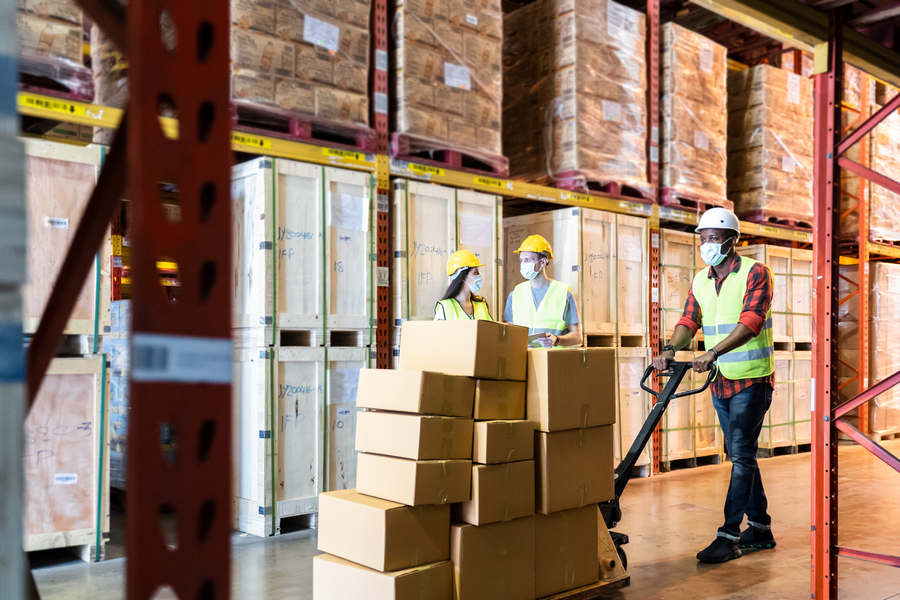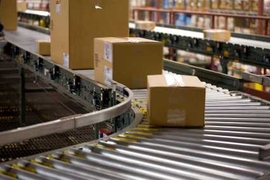As part of the MIT Task Force on the Work of the Future’s new series of research briefs, MIT Professor Frank Levy teamed with Wellesley College undergraduate Arshia Mehta to examine the future of logistics, especially in light of changes due to the Covid-19 pandemic. The brief explores how technology is changing the warehousing and trucking industries and the resulting impacts on employment. Levy is a professor emeritus of MIT’s Department of Urban Studies and Planning and an advisory board member of the MIT Task Force on the Work of the Future. Mehta is a BA candidate in economics and chemistry at Wellesley.
This research brief, “Warehousing, Trucking and Technology: The Future Work in Logistics” explores the impact of current and future automation on each industry’s employment and highlights policy recommendations for workers. Levy and Mehta recently gave an overview of their research.
Q: How is technology changing the warehousing and trucking industries? Is this relatively new?
Levy: Logistics presents an unusual example of how technology changes work. In many industries, technology operates only on the supply side of the market, replacing people in the production of goods and services. In logistics, technology also works on the demand side of the market. By enabling e-commerce, internet technology has sharply increased the demand for two kinds of logistics services. The warehousing industry, historically built around bulk packaging, now during the pandemic handles huge numbers of individual items — for example, individual bottles of hand sanitizer, individual toys, and so on. The trucking industry, built around large shipments to distribution centers and retail stores, must now make many more small deliveries to individual homes.
Increased demand in warehousing and trucking has stimulated work on cost-reducing, productivity-enhancing innovation. In warehousing, this includes varieties of warehouse automation, including warehouse management systems, automated storage and retrieval systems, and pick-to-light systems.
In trucking, startups are working on autonomous trucks that can run on interstate highways, and sidewalk robots and drones for last-mile delivery. These innovations are still under development, but less-dramatic innovations in truck scheduling, shipment tracking, and paperwork processing have increased productivity by using trucks more efficiently.
The technology of the internet, working through e-commerce, is the main force reshaping logistics. And e-commerce is just a heavily refined version of an idea that was first implemented in 1984, i.e., sales over the internet. Hence, the technology itself is not relatively new, but it is the growing adoption of the idea that is transforming logistics.
Q: What are the implications for workers?
Mehta: To this point, the job gains due to e-commerce have outpaced the job losses due to automation. The shift from bulk-order fulfillment to single-order fulfillment, coupled with the slow adoption of automation due to the limitations of current technologies and an uncertain economic environment, means many warehouse tasks must still be performed by people. Between 2000 and 2019, warehouse employment increased from 440,000 to 1.3 million people. In the short run, this trend is likely to continue as the pandemic has increased e-commerce demand and the uncertainty of the economic environment. However, in the long run — eight to 10 years — automation is likely to dominate, resulting in a workforce that is smaller and more highly-skilled than the workforce of today.
As warehousing and trucking automation evolve, there will be a decrease in demand for low-skilled workers — "pick and pack" workers in warehousing, truck drivers who cannot handle computerized controls, and the routine clerical jobs involved in freight scheduling. At the same time, there will be a smaller increase in demand for technicians, analysts, and other higher-skilled occupations who can monitor and maintain automated systems.
Q: What policies do you think should be considered to help workers in these industries?
Levy: Automation in the warehousing and trucking industries will disproportionately affect jobs filled with workers whose education stopped at high school. Because logistics employment is spread across the country and adoption of automation is still gradual, there is a chance to avoid the collapse that came when large numbers of manufacturing jobs suddenly moved to Mexico and, later, China.
Policies start with three goals: help employees to move into high-skilled jobs that are less vulnerable to automation; improve the quality of low-wage warehouse jobs in the interim; and strengthen the safety net for those workers who are displaced by automation. In warehousing, policies such as developing employer-community college consortia to expand access to career education would enable low-skilled workers to move to higher-skilled jobs. While large firms, like Amazon and Walmart, can afford to offer career training courses privately, many smaller firms will require public-private collaboration with multiple smaller employers.
With respect to job quality, the average wage for entry-level warehouse workers is roughly $12 per hour, well below the Amazon minimum wage of $15. Until states begin to adopt a $15 minimum wage, localities can leverage local economic development incentives (e.g., optimal building site with access to interstate highways) to encourage new warehouses to set a higher-than-market minimum wage and to cooperate with local career education consortia.
In trucking, policy should begin with the adoption of a federal mileage tax on autonomous trucks. This would provide funding for a program, administered by the states, to provide a safety net for truck drivers displaced by automation and help them transition into other occupations. Additionally, this would offset those aspects of the tax code that favor automation. The United Brotherhood of Teamsters is currently drafting such a proposal.









